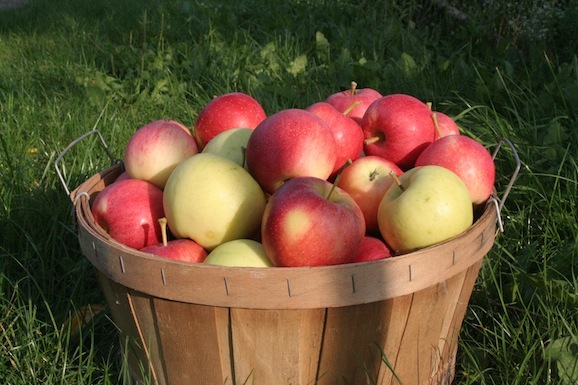If we get a nice spell towards the end of August and into September, the chances are that a lot of the earlier flowering perennials will send up a new set of flower buds, so prolonging the flowering season.
Towards the end September and into October is the time to start sorting out the garden for the coming winter months and to prepare for spring colour.
Summer hanging baskets and pots are beginning to go over now and once the weather starts to cool down, think about those plants that you want to keep over winter.
Pot up for winter
Geraniums and fuchsias can be trimmed back and potted up for the winter. Make sure that they are placed somewhere frost free – a spare bedroom, utility room, conservatory or garage that has some slight heat in the winter. In a severe winter an unheated garage will not be suitable for the storage of cold sensitive plants.
Begonia corms and dahlia tubers can be dried off and again stored in a frost free environment – wrap in newspaper or dry peat, and dust with sulphur before storing.
It’s an ideal time to make a note of what’s done well this year and what hasn’t, bearing in mind that the lack of sun this year and heavy rainfalls have spoilt some types of bedding, others, though, have flourished in the weather – we’ve had particularly good antirrhinums or snap dragons, they’re an old favourite and well worth remembering for next year.
Aerating the lawn
September and October are ideal months for aerating the lawn with a fork or special tool, after which you can apply Scotts Autumn Lawn Food to nourish your lawn through the winter months. Reseed or re-turf any bare patches. The best turf to buy is the cultivated, which should be weed free and has been produced specifically for the lawn and is not just a field of grass that’s been cut. Ours is delivered fresh every Friday. The larvae of the daddy long legs (crane fly) can become apparent in lawns during August and September; they will attack on most soils but in particular damp soils and heavy clays. If you see signs of damage, spray with Provado Lawn Grub Killer immediately.
Christmas flowering
Buy prepared hyacinth bulbs for Christmas flowering and plant them in bowls using bulb compost. The charcoal in the compost will keep the soil sweet. Put in a cool, dark place and bring gradually into the light and warmth once the shoots are approximately 3cm high. If you want hyacinths in flower for Christmas, they should be planted by mid-September.
When planting bulbs in containers outside, it’s worth putting in at least two layers of bulbs, slightly staggered one above the other. This will ensure a spectacular display. Plant the bulbs deeply enough to allow you to plant winter and spring bedding on top.
Plant spring flowering bulbs in the garden as soon as possible, so that roots can develop whilst the soil is still warm. The only exception to this rule are tulips which can be planted late – into December if you wish.
Harvest onions and potatoes
Harvest onions and potatoes now – lift up onions and allow to dry out where they’ve been growing if the weather is fine, before storing. Potatoes should be stored in a cool but frost free environment, hessian sacks available from garden centres are ideal for this purpose. Continue to pick runner beans and courgettes on a regular basis, so that they don’t become stringy.
Pick early apples and pears as they become ripe. Eat the earlier varieties straight away, but the later ripening ones can be stored for later use. Cover autumn fruiting raspberries against birds. The old fruiting canes can be pruned out during the winter months as the autumn varieties fruit on new season’s growth each year.
Dead head roses, trimming back any very long growths. Remove any foliage with rust or blackspot, making sure you dispose of it rather than putting on the compost heap. Remember to clean up any debris under rose bushes as blackspot will overwinter ready to re-infect bushes next year. Rambling roses can be pruned now by cutting out some of the old flowered growths and tying in new growths to take their place.
Clean out greenhouses before putting in overwintering plants and insulate with bubble. Check over heaters ready for the first frosts. As you bring in plants to over winter watch out for vine weevil larvae, especially on fuchsias. If you do see signs of them, drench the compost with one of the chemicals available for their control.







